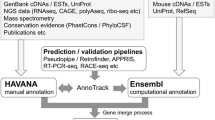Abstract
Mice and rats are the most commonly used vertebrate model organisms in biomedical research. The availability of a reference genome in both animals combined with the deep sequencing of several doze of popular inbred lines also provides rich sequence variation data in these species. In some cases, such sequence variants can be linked directly to a distinctive phenotype. In previous work, we created the mouse and rat online searchable databases (“Mousepost” and “Ratpost”) where small variant information for protein coding transcripts in mouse and rat inbred strains can be easily retrieved at the amino acid level. These tools are directly useful in forward genetics strategies or as a repository of existing sequence variations. Here, we perform a comparison between the “Mousepost” and “Ratpost” databases and we couple these two tools to a database of human sequence variants ClinVar. We investigated the level of redundancy and complementarity of known variants in protein coding transcripts and found that the large majority of variants is species-specific. However, a small set of positions is conserved in an inbred line between both species. We conclude that both databases are highly complementary, but this may change with further sequencing efforts in both species.




Similar content being viewed by others
Data availability
All data used are publicly available at the rat genome database, the mouse genomes project, Ensembl, ratpost.be and mousepost.be.
References
Atanur SS et al (2013) Genome sequencing reveals loci under artificial selection that underlie disease phenotypes in the laboratory rat. Cell 154(3):691–703
Beck JA et al (2000) Genealogies of mouse inbred strains. Nat Genet 24(1):23
Bergman I et al (2000) Comparison of in vitro antibody-targeted cytotoxicity using mouse, rat and human effectors. Cancer Immunol Immunother 49(4–5):259–266
Choi Y et al (2012) Predicting the functional effect of amino acid substitutions and indels. PloS ONE 7(10):e46688
Cock PJA et al (2009) Biopython: freely available Python tools for computational molecular biology and bioinformatics. Bioinformatics 25(11):1422–1423
Ellenbroek B, Youn J (2016) Rodent models in neuroscience research: is it a rat race? Dis Model Mech 9(10):1079–1087
Mouse Genome Sequencing Consortium et al (2002) Initial sequencing and comparative analysis of the mouse genome. Nature 420(6915):520–562
Gibbs RA et al (2004) Genome sequence of the Brown Norway rat yields insights into mammalian evolution. Nature 428(6982):493–521
Hermsen R et al (2015) Genomic landscape of rat strain and substrain variation. BMC Genomics 16:357
Ibarra-Soria X et al (2017) Variation in olfactory neuron repertoires is genetically controlled and environmentally modulated. eLife 6:e21476
Keane TM et al (2011) Mouse genomic variation and its effect on phenotypes and gene regulation. Nature 477(7364):289–294
Landrum MJ et al (2018) ClinVar: improving access to variant interpretations and supporting evidence. Nucleic Acids Res 46(D1):D1062–D1067
Lu BS et al (2007) Generation of rat mutants using a coat color-tagged Sleeping Beauty transposon system. Mamm Genome 18(5):338–346
Modlinska K, Pisula W (2020) The Norway rat, from an obnoxious pest to a laboratory pet. eLife 9:e50651
Morse H (1981) The laboratory mouse—a historical perspective. In: Foster HL, Small JD, Fox JG (eds) The mouse in biomedical research. Academic Press, New York, pp 1–16
Mouse Genome Sequencing, C et al (2002) Initial sequencing and comparative analysis of the mouse genome. Nature 420(6915):520–62
Philipeaux J (1856) Note sur l’exstirpation des capsules surrenales chez les rats albinos (Mus rattus). Compt Rend Hebd Seances Acad Sci 43:904–906
Poltorak A et al (1998) Defective LPS signaling in C3H/HeJ and C57BL/10ScCr mice: mutations in Tlr4 gene. Science (New York, NY) 282(5396):2085–8
Sharp PE, Villano JS (2013) The laboratory rat, 2nd edn. The laboratory animal pocket reference series. CRC Press, Boca Raton, Vol xxi, p 377
Smith JR et al (2020) The Year of the Rat: The Rat Genome Database at 20: a multi-species knowledgebase and analysis platform. Nucleic Acids Res 48(D1):D731–D742
Timmermans S, Libert C (2021) Ratpost: a searchable database of protein-inactivating sequence variations in 40 sequenced rat-inbred strains. Mamm Genome 32(1):1–11
Timmermans S, Van Montagu M, Libert C (2017) Complete overview of protein-inactivating sequence variations in 36 sequenced mouse inbred strains. Proc Natl Acad Sci USA 114(34):9158–9163
Viney M, Lazarou L, Abolins S (2015) The laboratory mouse and wild immunology. Parasite Immunol 37(5):267–273
Yates AD et al (2020) Ensembl 2020. Nucleic Acids Res 48(D1):D682–D688
Yeung F et al (2020) Altered immunity of laboratory mice in the natural environment is associated with fungal colonization. Cell Host Microbe 27(5):809
Yokoyama T et al (1990) Conserved cysteine to serine mutation in tyrosinase is responsible for the classical albino mutation in laboratory mice. Nucleic Acids Res 18(24):7293–7298
Zhou YY et al (2019) Metascape provides a biologist-oriented resource for the analysis of systems-level datasets. Nat Commun 10:1523
Funding
Research was funded by the Research Council of Ghent University (GOA program), the Research Foundation Flanders (FWO Vlaanderen) and Flanders Institute for Biotechnology (VIB).
Author information
Authors and Affiliations
Contributions
ST performed all analyses and wrote the first draft of the manuscript. CL guided the research and edited the manuscript.
Corresponding author
Ethics declarations
Conflict of interest
On behalf of both authors, the corresponding author states that there is no conflict of interest.
Additional information
Publisher's Note
Springer Nature remains neutral with regard to jurisdictional claims in published maps and institutional affiliations.
Supplementary Information
Below is the link to the electronic supplementary material.
Rights and permissions
About this article
Cite this article
Timmermans, S., Libert, C. Coding variants in mouse and rat model organisms: mousepost and ratpost. Mamm Genome 33, 81–87 (2022). https://doi.org/10.1007/s00335-021-09898-w
Received:
Accepted:
Published:
Issue Date:
DOI: https://doi.org/10.1007/s00335-021-09898-w




